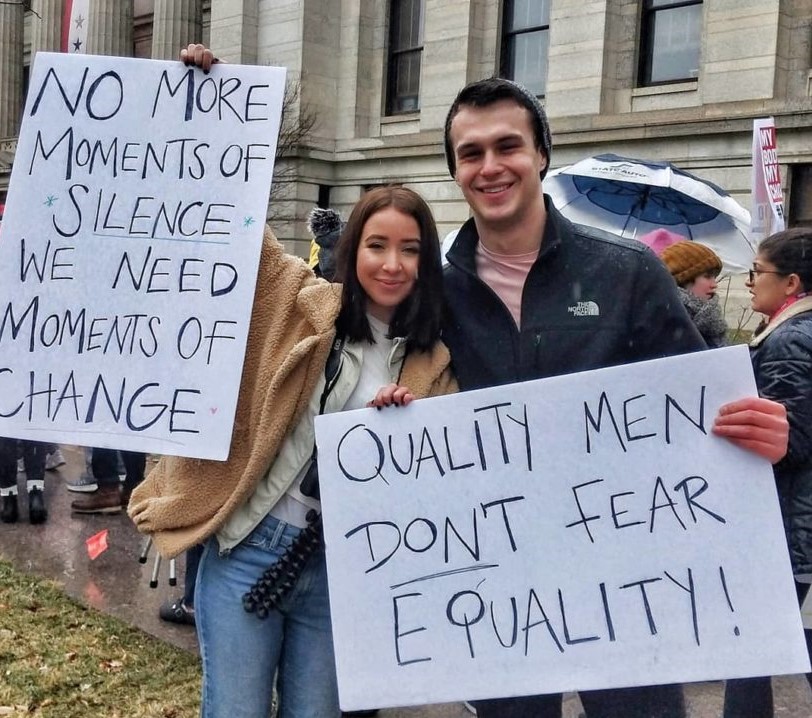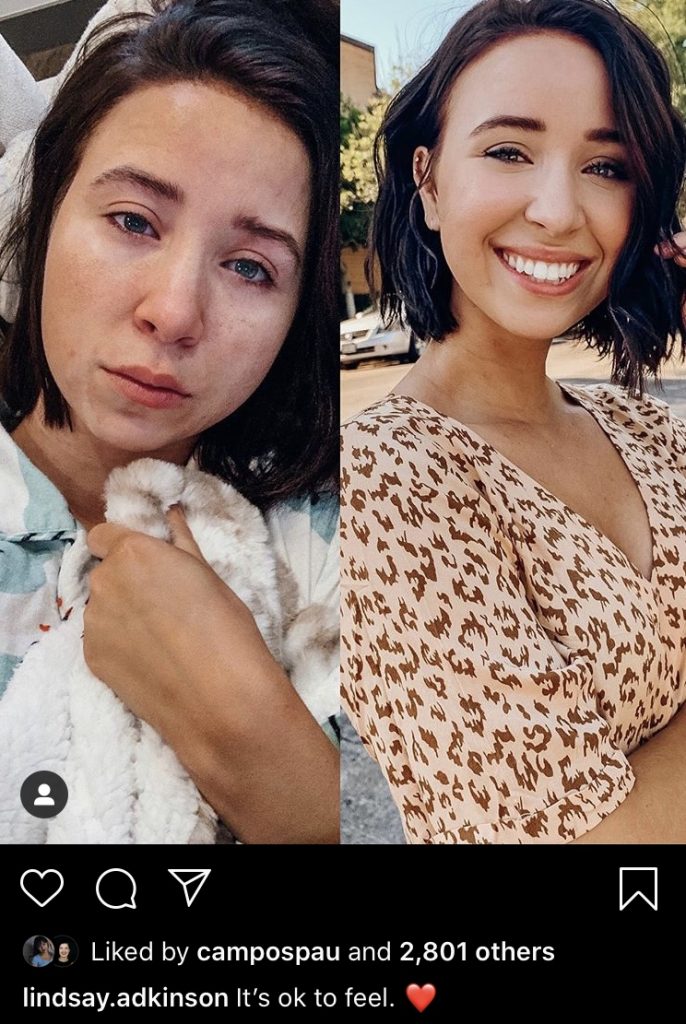Culture May 4, 2020
Lindsay Adkinson was raped at the age of 14. She now shares her story to help other rape/sexual assault survivors.


Lindsay Adkinson: a YouTuber, a blogger, and a podcaster, and now, a pioneer for sexual assault recovery. With the aftermath of the #MeToo movement shedding light on what rape really is, we still fail rape/sexual assault survivors. It is the bravery of people like Lindsay, that is slowly helping to change this.
Adkinson has a following of over 300k on YouTube. Her videos cover topics so serious as sexual assault, to lighter subjects such as tips for improving photographer. But a highlight of her channel is her sexual assault story, a 22-minute long video exposes how she lost her virginity to rape, only aged 14. A definite disclosure; don’t watch if you are triggered by rape/sexual assault.
I made contact with Adkinson after watching and reading through her videos and blog posts to see how she dealt with openly talking about the trauma she went through.
“I definitely do not regret sharing at all! It’s almost, at times given me a sense of purpose for the things I’ve been through. I’ve had so many people daily say they’ve found peace or strength from my story and I keep an open line of communication with all of my viewers, so they know they can always talk to me for advice,” Adkinson said.

“Lindsay, what did you think would happen when you hang out with older boys?”
After keeping the rape to herself for a significant amount of time, Adkinson told someone, just to be told that it was her own fault. Here, Adkinson highlights the issue of victim-blaming, an issue hardly unheard of. With a President like Trump and perverted medical professionals such as Larry Nassar, rapists are able to thrive off a culture that holds the victim accountable, as it enables them to carry on with their disgusting behavior.
Jason Whiting’s article on Psychology Today explores the different causes that perpetuate victim-blaming culture. These vary from, the “myth of the evil perpetrator,” where many only perceive a man as a rapist if he is inherently evil.
Whiting also mentions the, “wishing the world was safe” type of victim-blaming. This is when someone blames the victim because it was their risky behavior that caused their rape. Their attitude is that it’s an unsafe world so women need to be more attentive. These people agree that it’s sad that something so horrible could happen, but there’s nothing that can be done.
When Adkinson first started writing online, it was an escape from what happened, so she didn’t disclose the truth. Then as she started to become a “social media influencer,” it became harder to not disclose what happened, and she started to avoid filming.
“Finally, I realized that it was hurting me more to hide it! Once I shared it, I’ve never wanted to look back. Vulnerability has helped me so much and in times of sadness/panic, I can look to the community online I now have and remember all the great support I get from them and hopefully the support I can give back!” She said.


Adkinson also sheds light on knowing your assaulter, the difficulty surrounding it, and the shame that accompanies it. Whiting’s article lists this guilt as an enabling factor for victim-blaming. So why do we still not believe victims when they tell us they’ve been raped?
Because we still believe that being raped constitutes being dragged into a back alley, by a stranger, in the middle of the night. We have a certain image of a standard rape survivor; helpless.
However, “acquaintance rape” – where the perpetrator knows the victim in an instance of forced, manipulated, or coerced sexual contact, is the most common form of rape.
She discusses the rapist boasting about taking her virginity. He joked that she was the worst he ever had, likening her to cardboard.
From Adkinson’s perspective, “I laid there like cardboard because I didn’t want it.”
It’s the same story, but completely different at the same time.
Knowing your perpetrator makes the aftermath of a rape hard because you’re subject to however the rapist and their support system choose to spin the story.


When Adkinson recounts the actual rape, she talks about how, when it was happening, she focused on the ceiling fan. She remembers that in that moment, she knew she was being raped. In order to focus on anything other than what was happening, she watched the ceiling fan; repeatedly going around.
This is known as freezing – an additional response to the “fight or flight” theory, from the brain, reacting to danger.
A defense barrister in a rape case in Belfast, Northern Ireland, asked the question that many victim-blamers ask, “Why did she not scream the house down?”
We have to learn that reactions to rape don’t always mean fighting back; it’s silent, it’s carrying on as normal. An anonymous cartoon released back in 2014, named ‘Trigger Warning: Breakfast’, discusses how she made her rapist breakfast the next morning because she felt like she had to.
“Since then I’ve always thought that under rape in the dictionary it should tell the truth. It is not just forcible intercourse; rape means to inhabit and destroy everything.” – Alice Sebold, The Lovely Bones (2002)
One in six American women are subject to complete, or attempted rape. In your lifetime, someone you know will have been raped. Why? Because the education surrounding what constitutes rape, and what constitutes consent is poor. It’s the work of people such as Lindsay Adkinson that is starting to change our culture and how we perceive rape and sexual assault.
It’s brave, but also it’s cathartic.
“Sharing my story and feeling less alone has made me actively seek new ways of coping (therapy, journaling, meditation, etc) so that I could share what worked for me with anyone else struggling! I definitely still have bad days though and sometimes I feel the need to stay online to help them, but I’ve been reminding myself that it’s okay to take time off and help myself before helping others too,” Adkinson said.
It enables victims to have the confidence to publicly talk about it – a massive step that’s vital to eradicate rape culture in our society. However, we still need widespread education to eradicate sexual assault. Writers like Adkinson should not have to carry the weight of educating society, it needs to be in the mainstream education system.


Youtube : https://www.youtube.com/channel/UC-eIR9TJ-qGgRXGlrUmUWlg
Website: https://lindsayadkinson.com/
Instagram: https://www.instagram.com/lindsay.adkinson/?hl=en